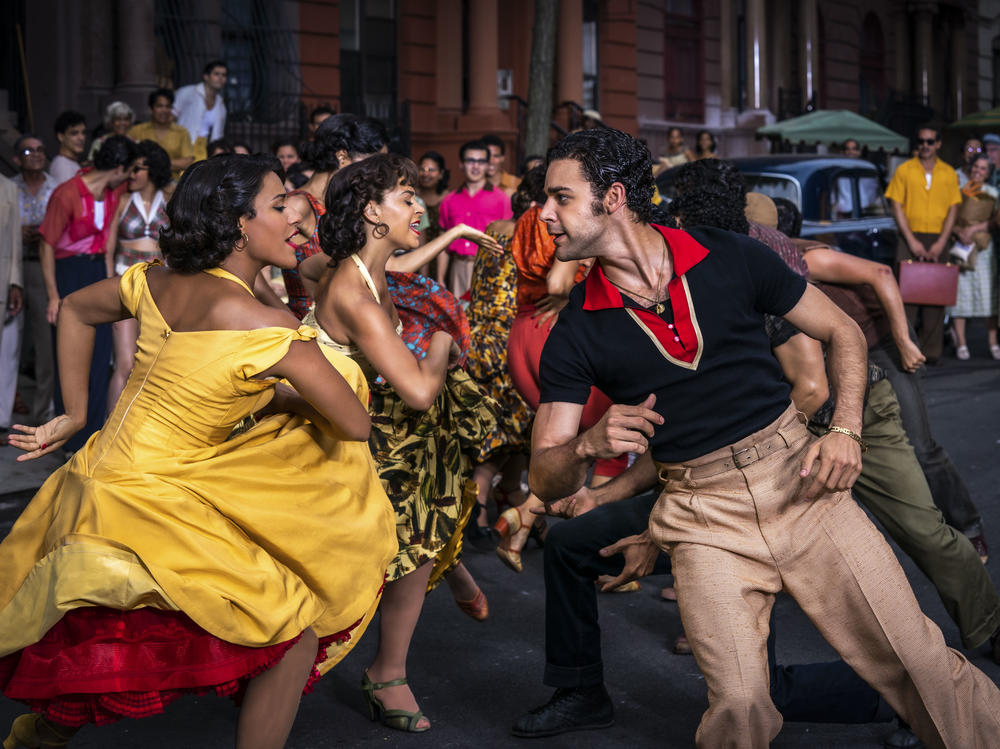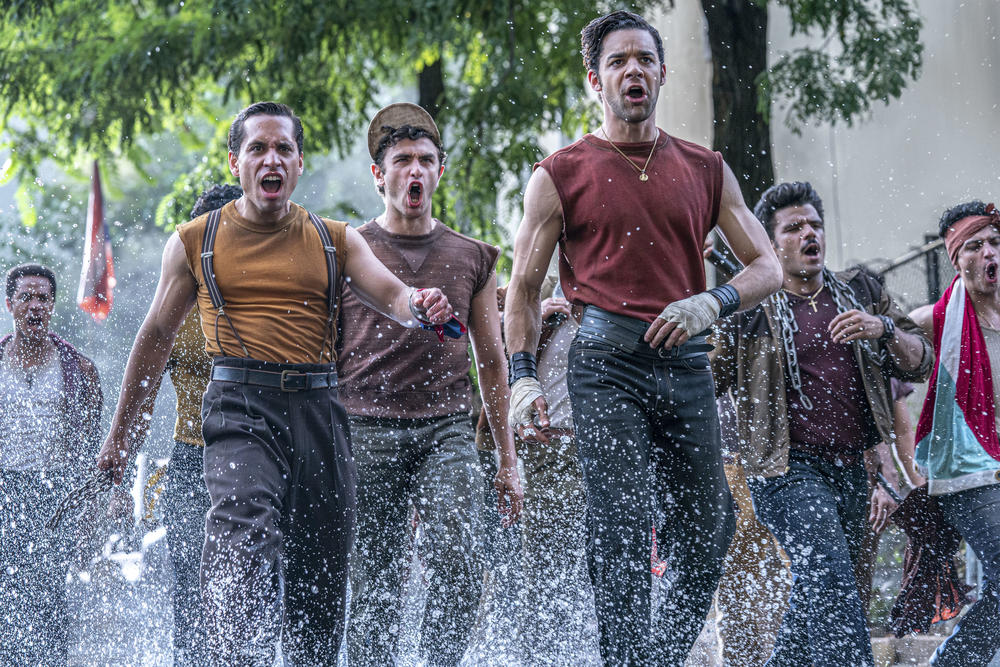Section Branding
Header Content
How choreographer Justin Peck helped reimagine 'West Side Story' for the 21st century
Primary Content
Updated January 10, 2022 at 12:21 PM ET
It takes some nerve to tackle a beloved artistic creation and make changes for new audiences. It's kind of like painting a moustache on the Mona Lisa (which was in fact done, by dada-ist Marcel Duchamp in 1919, to much public amazement). But that's exactly what's been done with West Side Story: 64 years after its Broadway opening, and 60 years after its film version, some of the brightest lights in show business — including director Stephen Spielberg and writer Tony Kushner — have re-imagined the legendary musical. They're following in the footsteps of the original work's creators: composer Leonard Bernstein, lyricist Stephan Sondheim, book author Arthur Laurents and stage director and choreographer Jerome Robbins.
If you're a fan of the original 1961 film, you may ask: How dare they tinker with such a classic? But, as Spielberg's choreographer Justin Peck says, "they approached this with a sense of reverence and admiration for the original." As did Peck, the resident choreographer for the distinguished New York City Ballet, who has designed 35 dances for stage.
As is the case with Spielberg, this is Peck's first movie musical — and his first movie, period. Luckily, he had Spielberg to guide him; the two worked closely together. And Peck was fascinated, watching the director read pages of words on the screenplay, "and immediately transpos[ing] that into visual language." Spielberg made quick, crude sketches like storyboards to show what he wanted the camera to see. Peck adjusted his dancers accordingly. That was the most exciting part for Peck — discovering "how visual [Spielberg] was as an artist."
There were times it wasn't easy. 100-degree days filming on killer hot New York city streets. The dancers and crew of West Side Story often had to perform on broiling cement, concrete, bricks and stairs. Peck says everybody pushed along together, in sweaty chaos. Meanwhile, Spielberg was in heaven. "I remember Stephen turning to me at one point and saying, 'there's nowhere else I'd rather be than here right now, working on this,'" Peck says.
Onstage in 1957 and in the 1961 film, Jerome Robbins' dances for the rival gangs and their girls were all attitude: snapping fingers, flashing teeth, flicking of skirts, tossing of heads. Justin Peck knows that original choreography cold; he danced the role of Sharks leader Bernardo when he was younger. But for this updated version, he makes the dances more menacing.
Each gang has its own movements. The newly arrived Puerto Rican Sharks swagger, scorning the Jets. But instead of swagger, the Jets are more complicated. Dancing close together, they move as one. "There's a kind of explosiveness," Peck says. "And a danger, and a unity."
The Jets' steps show their bond, which gives them security, and you can see it in how they move. "They're being pushed out of this neighborhood," Peck says. "They don't have jobs, they don't have a sense of what the future holds. All they have is one another and the kind of 'family' they consider their gang to be."
Like the choreography, West Side Story's musical creators, composer Leonard Bernstein and lyricist Stephen Sondheim, reflect all this tension in their songs. In "America," — a spirited, hilarious fight song — the Sharks argue the merits of their new home, versus the tropical island they left behind. One lyric: I'll get a washing machine. What have they got there to keep clean!?
The argument becomes the dance. "As the tension rises, " says Justin Peck, "and the pressure between them gets higher, when words fail and there needs to be steam let off, it lifts off into dance." The movement continues the story. And it all comes together, sweeping the original tale, based on Shakespeare's Romeo and Juliet, into a new century.
Copyright 2022 NPR. To see more, visit https://www.npr.org.


